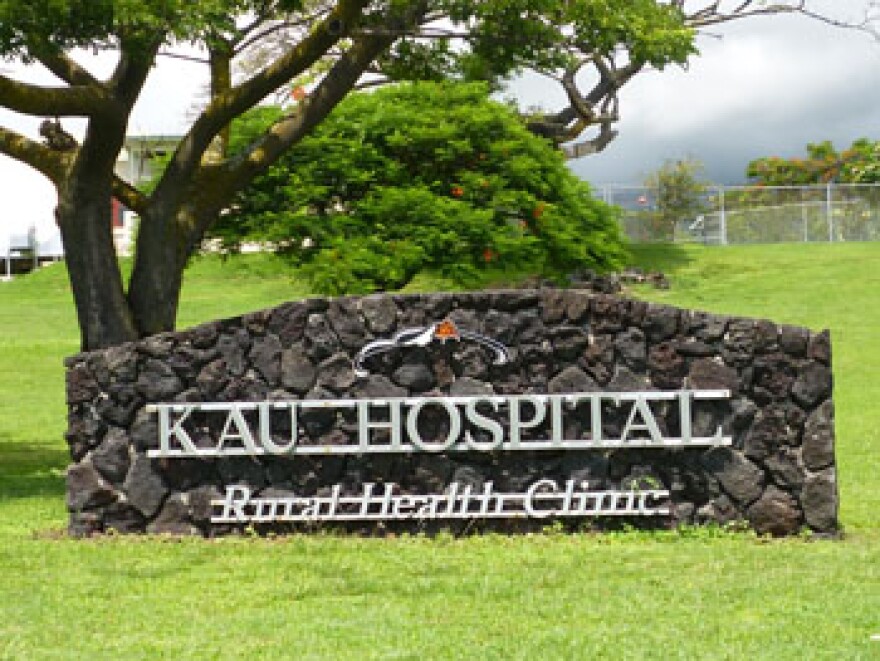At least one positive case of COVID-19 has been found in the Ka?? region of the Big Island, according to state health officials. It's something this remote and rural district has been preparing months for.
The rugged terrain of Ka?? stretches over more than 900 square miles on the southern part of Hawai?i Island. It’s a region rich in plantation history, coffee crops and, these days, uncertainty about COVID-19. Jessie Marques runs the Ka?? Rural Health Community Association.

“A lot of people are overwhelmed, but also a lot of people don?t quite understand how it's going to impact us here in Ka??,” says Marques.
Marques has been working closely with Ka?? Hospital and Bay Clinic in Na?alehu to provide a regional approach to community outreach and preparation for a possible surge.
“You know making sure there?s PPE available, hand sanitizer, masks, things like that,” says Marques.

Merilyn Harris, who runs the Ka?? Hospital, says she currently has five acute care beds and one ventilator. This is the only hospital in the district serving nearly 9,000 Ka?? residents.
“So we have plans in place that will ramp up our response based upon what the amount of spread in the community [is],” says Harris. “And so right now, we?re just in prevention mode.”
She?s isolated long-term care residents. Doctors are opting for telemedicine. And anyone entering the hospital is screened for a fever or respiratory symptoms. But if a patient presents COVID-19 symptoms, “that patient would most likely be sent to Hilo Medical Center or Kona Community Hospital right away because they can provide a higher level of care than what we can,” says Harris.
Hilo is an hour-long drive, which concerns Marques, who lives five minutes from Ka?? Hospital.
“If I got a fever and coughing, I?m not going to end up in the E.R. in Ka??. I?m going to end up in the E.R. in Hilo or in Kona,” says Marques. “And as a senior citizen on limited income, I don?t have the means to pay for this. What happens if I refuse?”
Hawai?i County councilwoman for Ka??, Maile David, says medical costs should not be a barrier to care during the pandemic.
“I think that?s the last thing our people should be worried about,” says David.
She hopes some of the federal relief aid can help cover some of these costs. In the meantime, the focus is on social distancing and complying with stay-at-home orders.
“Because access to medical care and access to everything else is very hard, I think that makes it even more of an urgency for people in rural areas to be very mindful and so they try as hard as they can to keep their families safe,” says David.





